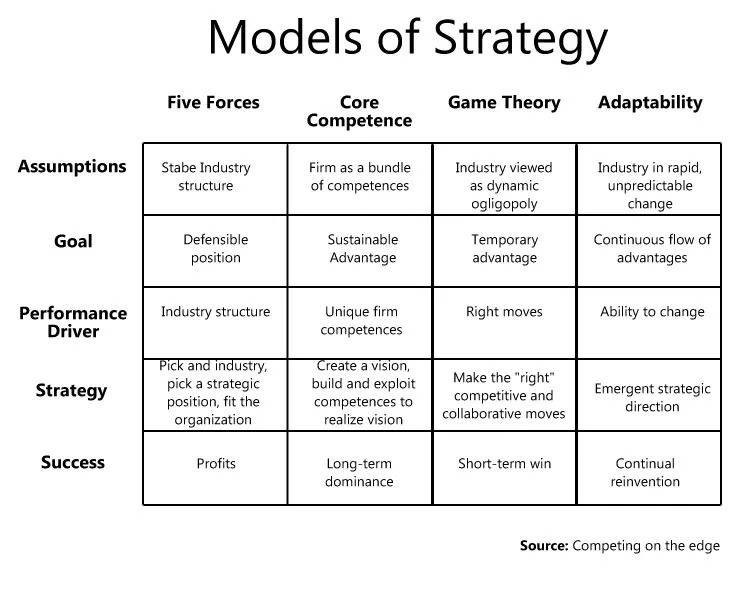According to Jorge Barba, entrepreneur and advisor, building competitive advantage is critical but evolving it is key. In today’s dynamic environment it is important for CEOs to understand that competitive advantage is not static, but rather about fluidity. Jorge talks about “strategy at the edge of chaos”.
Our dynamic video summarises his views on the mindset all modern-day businesses should cultivate. This article is curated from the resources section in NXT-9’s Academy.
An often asked question. Yet, there are those who think that competitive advantages are everlasting.
Competitive advantage, it seems to me, has become an instrument of finance. As in, how can our company accumulate hoards of cash to become sustainable?
The defining metric for said advantage is profits. That is a mindset, I believe, of playing not to lose.
Accumulating a war chest of money doesn’t mean you will outlast the next wave of change, you have things upside down, for an investment in innovation is an investment in your future.
Change is pervasive, partners can become competitors, companies on adjacent industries can become competitors. Sustainable competitive advantage is a myth.
Competitive advantage is no longer about positioning, it is about fluidity. Heck, its always been this way. It is just that the majority of companies subscribed to the Porter school of thinking. Tim Kastelle published a nice visual (as well as blog post) that exemplifies why competitive advantage, as practiced, is dying.
The type competitive advantage I’m talking about is positioning. To achieve strategic positioning and achieve sustainable advantage over a long time, you had to do three things: lock-in customers, secure preferential access to resources and build economies of scale.
That sums it up. In doing these three things, you could defend your position for a long time.
Here is a chart that outlines the different models of strategy as practiced today:

If think it is useful to contemplate the following question: what does a competitive advantage look like?
For me, it looks like separation. Not just in terms of profits, but in relevance. In the world of business, the goal of strategy is to shape the future and give an organization a difference that matters. And, enable it to do something of importance particularly well.
Aim for evolutionary advantage
Counter to positioning, at the far end, is the type of strategy that embodies opportunistic planning. As in, strategy at the edge of chaos. It is a mix between planning and improvisation. It is here where companies like Google play. They don’t aim for sustainable advantage, but evolutionary advantage.
And, it is all about the user.
Jack Welch famously said “If you don’t have a competitive advantage, don’t compete”. It is a good point , but the reality is, most business won’t ever have a competitive advantage. Why? Because most are following in the footsteps of others. And, if you analyse it, most companies still play by the old rules of positioning. Depending on who you ask, to me, that is not a competitive advantage. And, not everyone will and wants to lead. That is just a fact of human nature.
Then there are companies that stumble upon a competitive advantage, not because of foresight and planning, but because of constant experimentation and learning from mistakes. Google stumbled upon their AdWords business model. It wasn’t foresight or planning. It was pure experimentation. I use Google because, to me, they embody the type of company that constantly experiments outside their core.
Another thing to remember, as I’ve written about before, no one has an advantage at everything. This means that whatever you thought “is a competitive advantage”, is not. Get that into your head. Unless it really challenges your will, you can still play.
Culture as competitive advantage
I refrain from benchmarking against competitors. The only reason I benchmark against them is to look at “what not to do”. I then ask myself: what can we can do, that no one else is “willing to do”? The key word there is willing. As in it will test their will to do it. It is taking it a step further from simply thinking about what others cannot do.
What others cannot do implies competence. What they will not do implies a different type of challenge: a challenge to their identity, and mindset.
And, what is your identity? Your culture. Similar to the “Disney Way”, it is why and how you do what you do. Aiming to create your culture is a daunting task, but one that if achieved, is sustainable.
Mindset is…
Cognitive advantage
The sources of advantage, the barriers that protect fast growing companies, are cognitive. Why? Because for the follower, it is a temporary illusion that success is just around the corner. It is not so much that the leading company has cognitive advantage, but that their followers are trapped in the same mental model.
It is until another company, or the leading company, adopts a different mental model that the potential for the game to change exists.
I will argue that a competitive advantage results in relevance. And, with relevance, comes profits. If you think about competitive advantage as “getting the most profits” like most do, it takes you down generic strategies.
And, generic strategies don’t ask the seemingly simple question of: does what you do matter?
Ultimately, I think, that is the question all strategists must answer.
Pundits are quick to point out specific “cookie cutter” tactics that companies use to create their competitive advantage. But unless those tactics are informed by a much deeper strategy, it is all naught.
Bottom line: So, competitive advantage is temporary because people’s tastes change, your own people change and your external environment changes. Strategy is dynamic and must be managed frame-by-frame. A competitive advantage then, is your ability to think and act differently about what you do.
